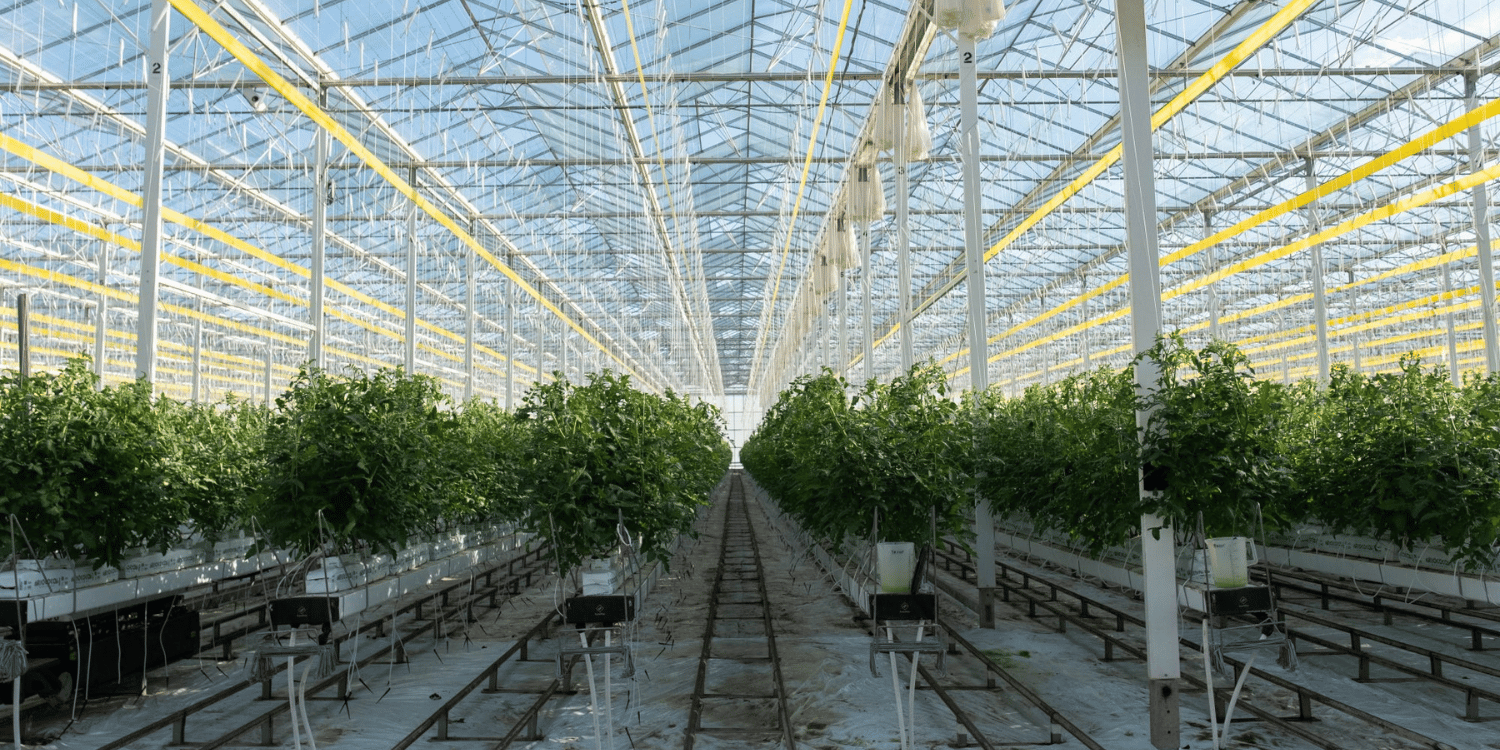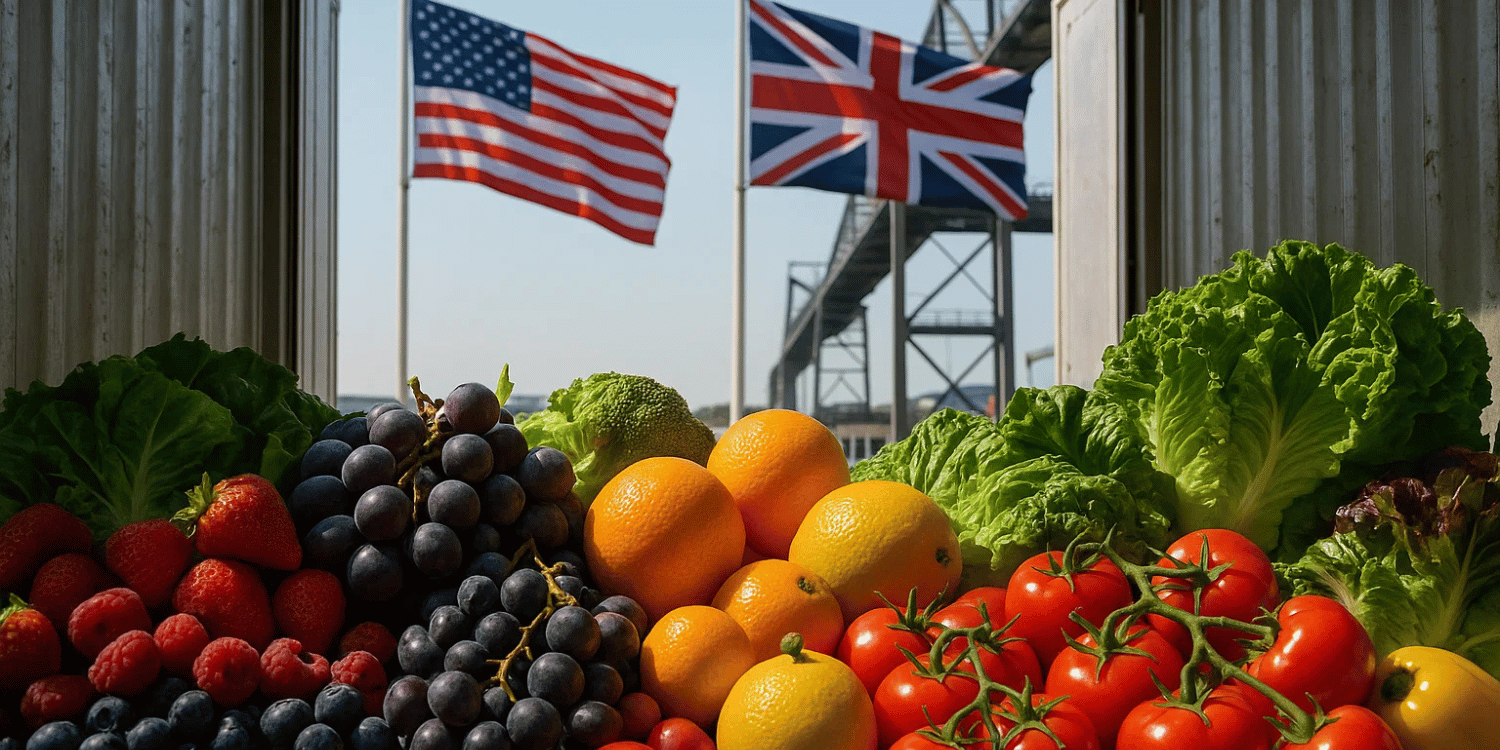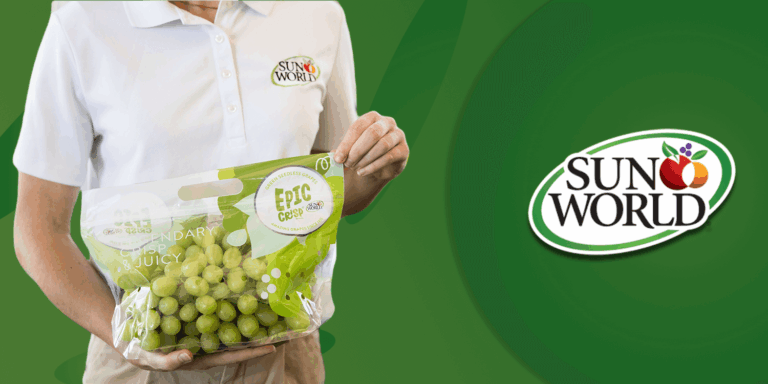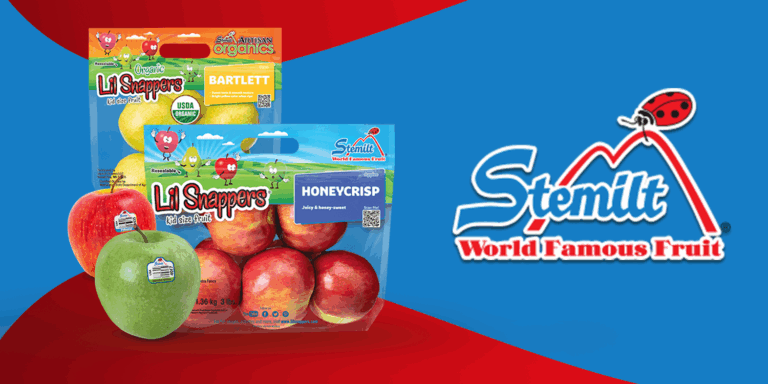In recent years, the health and wellness industry has experienced a marked shift, with consumers becoming more cognizant of their dietary choices.
This change has had a profound impact on the food market, particularly on the demand for fresh produce.
As wellness continues to be a buzzword, consumers are opting for fresh fruits and vegetables over processed foods.
However, it’s not just about making ‘healthy’ food choices, it’s also about understanding the health benefits associated with these choices.
This growing health awareness has not only led to changes in food habits, but it has also significantly influenced consumers’ grocery shopping trends.
Our new focus is exploring this transformation, delving into how consumers’ produce preferences have been sculpted by emerging health trends.
Contents
- How Do Health Trends Shape Consumer’s Produce Preferences?
- An Overview of Health Trends
- The Role of Health Awareness in Shaping Produce Preferences
- Impact of Superfoods on Consumer’s Choices
- Organic Farming and Its Influence on Consumer Buying Behavior
- Popular Health Trends and Produce Preferences: A Connection?
- Plant-Based Diets: Driving the Demand for Fresh Produce
- How Do Healthier Lifestyles Affect Traditional Shopping Habits?
- How Is Sustainability Affecting Consumer’s Produce Choices?
- The Role of Social Media in Shaping Health Trends and Choices
- Predictions: Upcoming Health Trends That May Shape Future Consumer Preferences.
- Final Thoughts
How Do Health Trends Shape Consumer’s Produce Preferences?
Health trends significantly shape consumer’s produce preferences as they increase awareness and knowledge about the benefits of certain foods. They highly influence consumer’s buying behavior, often leading to an increased demand for superfoods, organic produce, and plant-based diets. As more consumers aim for healthful lifestyles, new trends emerge, continuously reshaping their preferences towards the desire for fresh, nutritious, and sustainable produce.
Continuing on this topic, it’s interesting to note that these health trends are not isolated occurrences.
In fact, they are often interlinked with other socio-cultural factors, such as sustainability movements or ethical consumerism.
Additionally, the role of social media and influencers in propagating these trends cannot be overlooked.
It is equally crucial to understand how these trends are shaping agricultural practices and the supply-chain dynamics.
In the upcoming sections, we delve deeper into these fascinating aspects, offering a comprehensive insight into this ever-evolving field.
Hold on to this narrative as we take you through the multifaceted correlation between health trends and consumer produce preference.
An Overview of Health Trends
The landscape of health trends has seen a drastic change in recent years.
Consumer behavior towards health and nutrition is becoming increasingly conscious and informed.
People are now more curious and particular about what they consume, leading to a surge in popularity of organic and superfoods.
– Health-conscious consumer behavior
The current generation, famously referred to as the information generation, is well-informed and aware of the various health benefits and drawbacks associated with different food items.
This level of awareness is propelled by easy access to the internet, allowing consumers to make informed food choices that suit their health and lifestyle needs.
Resultantly, there has been a prominent shift towards health-conscious consumer behavior observed globally.
This behavior extends not just to food choices but also the type of physical activity and overall lifestyle followed by consumers.
Health trends involve not just diet patterns but also different types of workout regimes and relaxation techniques such as yoga, high-intensity interval training (HIIT), and meditation.
The significant shift towards health-conscious consumer behavior is prominently observed globally.
This shift has initiated several positive changes in the food and lifestyle industry, with increased demand for organic products, plant-based diets, and natural therapies.
Supermarkets today dedicate entire sections to organic, vegan, and gluten-free options, something that was unheard of a decade ago.
– Internet as a tool for health awareness
The role of the internet in shaping these health trends cannot be understated.
Consumers today have a wealth of information available to them at their fingertips, enabling them to make informed decisions about their food and lifestyle choices.
Health conscious blogs, vlogs, and social media influencers have played decisive roles in popularizing various food trends, whether it’s the rise of avocado toast, the vegan wave, or the gluten-free campaigns.
Health-conscious blogs, vlogs, and social media influencers have played decisive roles in popularizing various food trends.
This online influence has led to a surge in demand for fresh produce, organic foods, plant-based diets, locally sourced foods, gluten-free options, and non-GMO products.
As a result, businesses in the food and health industry have had to adapt their strategies to keep up with these trends.
This huge shift in consumer behavior has also affected how businesses market their products, with an increased focus on health benefits, nutritional content, organic or natural ingredients, and sustainable practices.
The Role of Health Awareness in Shaping Produce Preferences
The rise in health awareness has undeniably led to significant changes in consumer behaviors, particularly in their produce preferences.
As the understanding of the connection between diet and health deepens, many individuals are gradually shifting their diet towards healthier choices.
Processed foods are increasingly being replaced by natural and organic produce.
This change in diet not only benefits individual health but also significantly reduces the impact on the environment.
Processed foods are increasingly being replaced by natural and organic produce.
This emerging preference for natural and organic foods over processed ones is a clear sign of heightened health consciousness among consumers.
And with issues like obesity, heart diseases and diabetes on the rise, this shift could be a game-changer in achieving a healthier population.
– Consumer’s Perspective on Organic Produce
Organic produce seems to be in high demand, as consumers increasingly become aware of the benefits tied to them.
These products are free from synthetic pesticides and fertilizers, making them a healthier and safer choice for many.
Moreover, organic farming helps in maintaining soil health and biodiversity, adding to the ecological advantages.
The consumer’s perspective that “Organic farming helps in maintaining soil health and biodiversity” reflects their growing responsibility towards their health as well as the environment.
When consumers choose organic, they’re not only opting for a healthier lifestyle but also contributing to a more sustainable system of food production.
– The Role of Media and Awareness Campaigns in Shaping Preferences
The media and various health campaigns also played a significant role in spreading health awareness.
Through these channels, consumers have understood the potential risks linked with unhealthy dietary habits and the numerous benefits of a balanced diet rich in fresh produce.
As a result, many have been inspired to make more informed and health-conscious choices when it comes to their diet.
The impact of media and health campaigns is evident.
As they continue to stress the importance of a balanced diet rich in fresh produce, we can expect a continued shift in consumer produce preferences in favor of healthier options.
– How Health Awareness Translates to Market Demand
The increased consciousness has also translated into a growing market demand for fresh and organic produce.
Farmers’ markets, organic food stores, and even larger supermarkets have all reported an increase in the sale of organic and fresh produce.
This demand is driving a change within the food industry with many businesses trying to meet these new requirements by offering healthier alternatives.
Catering to this demand is not just good for business, but is also a step towards promoting and sustaining healthier dietary habits among the populace.
Impact of Superfoods on Consumer’s Choices
A significant shift has been observed in consumer food choices over recent years, with an increasing focus on superfoods.
This transformation is not spontaneous; rather it is driven by a range of factors.
The most recognized factor is the growing awareness about the health benefits linked with these nutrient-powered foods.
– The rise of superfoods
Superfoods refer to nutrient-rich food items that are believed to be especially good for health and well-being.
Typically, superfoods are plant-based although several fish and dairy items are also considered superfoods due to their high nutritional value.
The rising popularity about these foods can be attributed to their health benefits and the increasing recognition of healthy dietary patterns.
The rising popularity about these foods can be attributed to their health benefits and the increasing recognition of healthy dietary patterns.
This trend indicates a growing customer awareness about the connection among diet, health and well-being.
The idea of using food as preventive medicine is also gaining traction.
Based on this, consumers are now more apt to seek out these so-called superfoods in their meals.
– Superfoods influencing consumer choices
Over time, the appeal of superfoods has grown significantly.
This is evidenced by the rise in demand for superfoods like quinoa, kale, and acai berries.
Such items are now regularly visible in mainstream grocery stores and supermarkets, reflecting a deviation in consumer purchasing patterns.
Eventually, many people are altering their food habits and switching to these natural powerhouses out of belief in their superior health benefits.
Eventually, many people are altering their food habits and switching to these natural powerhouses out of belief in their superior health benefits.
Their high nutrient content, coupled with their supposed capability to resist major life-threatening diseases like heart disease and cancer, make them an attractive choice for health-conscious consumers.
No wonder then that superfoods have become a notable trend in the food sector, dictating consumer choices to a great extent.
– Role of media and marketing
The media and marketing have played significant roles in making superfoods more popular.
With influential marketing campaigns, superfoods are being projected as must-haves for good health – a proposition that’s luring to today’s health-oriented consumers.
Firms operating in the health and fitness sectors are promoting the consumption of superfoods, thus escalating their demand.
This online discussion provides a useful insight into the impact of superfoods on dietary choices and overall health.
Moreover, it sheds light on critical concerns related to sustainable diets for human and planetary health.
Organic Farming and Its Influence on Consumer Buying Behavior
As consumer’s grow increasingly aware of the importance of a healthy diet, the demand for organically grown products continues to rise.
Organic farming champions the use of farming practices that stimulate and enhance biodiversity, biological cycles, and soil biological activity.
It stands as an environmentally, socially, and economically sustainable alternative to conventional farming.
– The Growing Popularity of Organic Food
Conventional farming heavily relies on synthetic fertilizers and pesticides, contributing to soil degradation, water contamination and a loss of biodiversity.
Organic farming, on the other hand, aims to minimize the environmental impact of agriculture while maintaining farm productivity.
Consumers are becoming increasingly aware of these issues.
The awareness is helping drive the demand for organic products.
Organic food consumption has seen a steady rise globally, reflecting the changing consumer behavior towards healthier and more sustainable food options.
– How Organic Farming Affects Consumer Purchasing Behavior
The surge in demand for organic food is notably affecting consumer buying behavior.
Increasingly, consumers are willing to pay a premium for foods that are sustainably produced, free from pesticides, and provide benefits for animal welfare, the environment, and farmer livelihoods.
“Increasingly, consumers are willing to pay a premium for foods that are sustainably produced, free from pesticides, and provide benefits for animal welfare, the environment, and farmer livelihoods.”
This increase in demand means that food retailers are looking to stock more organic options, further driving supply and increasing the product’s availability.
The expansion of the organic market has led to more available information about the benefits of organic farming, influencing customer’s choices even further.
These insights regarding the broader benefits of organic farming are driving more customers towards these products, further promoting their uptake.
As a result, retailers are responding with a wider array of organic offerings.
In fact, the availability of organic food has shifted from being a niche market, primarily available in health food stores, to mainstream retail outlets.
Many traditional grocery stores now have a section dedicated to organic products.
This increased accessibility makes it easier for consumers to incorporate organic foods into their diet and has undeniably played a part in the shift towards healthier, more sustainable purchases.
– Increased Transparency Influencing Purchasing Decisions
Furthermore, transparency is emerging as a critical element in today’s food system.
Consumers want to know where their food comes from, how it is produced, and its impact on the environment.
This transparency is made possible through certifications that guarantee organic products meet strict, federally regulated standards.
As a marker of higher quality and safety, these certifications have also played a significant role in shaping customer preferences and purchase decisions.
While the movement towards organically produced food is promising, it is essential to note that organic production cannot fully meet global food demand as it currently stands.
Nevertheless, the trend towards more sustainable and health-conscious food choices is expected to continue, and the influence of organic farming on consumer buying behavior is undeniable.
Popular Health Trends and Produce Preferences: A Connection?
In the light of today’s health-conscious society, a noticeable trend can be observed in consumer behavior towards produce preferences.
A key factor in this shift has undeniably been the popularity of various health trends and diet styles.
– The Impact of Health Trends on Produce Choices
For instance, the boom in the keto diet trend has sparked an increased demand for avocados, a high-fat, low-carb fruit favorably incorporated into the diet.
Similarly, the trend of smoothie bowls and green juices that promote detox and overall health have led to a surge in sales of berries, bananas, and leafy greens.
These various health trends act as catalysts, shaping consumer’s produce preferences and in turn, affecting market dynamics.
The trend of smoothie bowls and green juices that promote detox and overall health have led to a surge in sales of berries, bananas, and leafy greens.
This is a clear indication of how health trends are influencing consumer choices and driving change in the type of produce being consumed on a wider scale.
What these trends also implicate is a larger societal shift towards healthy eating and lifestyle habits.
– Plant-based and Veganism Trend Influence
Another significant trend that has reshaped produce preferences is the rise of plant-based diets and veganism.
Consumers adhering to these lifestyle choices gravitate towards diverse vegetables and fruits but also toward less commonly consumed produce like lentils, beans, and various types of grains, seeds, and nuts.
This has, in turn, influenced restaurants, cafes, and food manufacturers to adapt their offerings to cater to this rising demand.
Consumers adhering to these lifestyle choices gravitate towards diverse vegetables and fruits but also toward less commonly consumed produce like lentils, beans, and various types of grains, seeds, and nuts.
This trend has broadened the scope and variety of produce consumption, allowing other less common produce to gain market value.
It’s crucial for the industry’s stakeholders including farmers, retailers, and policymakers, to understand these evolving preferences to make informed decisions.
For those looking to enhance their understanding, the video provides deeper insights into how growth patterns in various sectors of the food, nutrition, and health industry have evolved over time.
One can learn about factors fueling these trends and the far-reaching effects they have on food production and consumer behavior.
Plant-Based Diets: Driving the Demand for Fresh Produce
The 21st century has witnessed a significant shift in consumer preferences towards a more health-centric lifestyle, punctuated by a marked increase in plant-based diets.
The broadening of knowledge in nutritional science and mounting evidence of the beneficial effects of plant-based diets on health and wellbeing are key to this trend.
This has driven an unprecedented demand in the produce market, as more and more consumers swap traditional protein sources for plant-based alternatives.
The 21st century has witnessed a significant shift in consumer preferences towards a more health-centric lifestyle, punctuated by a marked increase in plant-based diets.
It is a trend spurred not only by health considerations but also by growing awareness of the impacts of our dietary choices on the environment and animal welfare.
– Implications for the Produce Market
The increase in plant-based diets represents a profound change in the shopping habits of consumers.
It has sparked a surge in the demand for a wider array of fresh fruits, vegetables, legumes, and grains.
On the supply side, this demand has led to expanded growing operations, innovation in farming practices, and even the creation of new plant-based products.
It has sparked a surge in the demand for a wider array of fresh fruits, vegetables, legumes, and grains.
These changes in consumer behaviour are challenging traditional food systems, forcing retailers and the food industry to adapt and innovate.
There’s a need for more product variety, increased availability, and greater emphasis on organic, sustainably sourced produce.
– Challenges and Opportunities
The shift towards plant-based diets also presents several challenges and opportunities.
On the one hand, there’s the challenge of meeting the increased demand and ensuring consistent supply.
On the other, there’s the opportunity for farmers, retailers, and food companies to innovate and develop new products that cater to this fast-growing market.
On the other, there’s the opportunity for farmers, retailers, and food companies to innovate and develop new products that cater to this fast-growing market.
Growth in plant-based diets is also driving a greater focus on food safety and traceability, as consumers want to know where their food comes from and how it is produced.
– Plant-Based Diets: The Future of Eating?
There’s no doubt that plant-based diets represent a significant cultural shift in how we think about food and health.
Whether this trend will continue into the future remains to be seen, but current indicators suggest that it’s more than just a passing fad.
As more consumers embrace plant-based diets, it’s clear that this trend is having a profound impact on the produce industry, and will likely shape future dietary and shopping habits.
How Do Healthier Lifestyles Affect Traditional Shopping Habits?
The rise in healthier lifestyles has brought about a significant shift in traditional shopping habits.
People are adopting lifestyles that prioritize good health, which has sparked a new consciousness towards the produce and food items that line our supermarket shelves.
– Fresh Produce over Processed Foods
The shift towards healthy lifestyles has made consumers more inclined towards fresh, organic produce over processed foods.
This is largely because processed foods are often high in fats, sugars, and salt, leading to potential health issues like obesity and heart diseases.
“The shift towards healthy lifestyles has made consumers more inclined towards fresh, organic produce over processed foods.”
People are now more educated about the consequences of these unhealthy food choices and are therefore opting for fresh produce – fruits, vegetables, whole grains, and lean meat – that offer superior nutritional benefits.
– Scrutiny of Ingredients
Health-conscious individuals have begun to scrutinize food labels and ingredient lists more rigorously.
They avoid products with artificial additives, chemicals, or unpronounceable ingredients as part of their adherence to a healthier lifestyle.
“The aspect of scrutinizing ingredients has become of utmost importance in the reshaping of traditional shopping habits.”
By understanding the ingredients, consumers are able to make informed decisions that not only have implications on their health but also have the potential to impact the environment and the ethical treatment of animals.
– Importance of Local Produce
Another emerging trend is the preference for local produce which involves consuming foods that are grown within a certain radius of where you live.
It not only reduces your carbon footprint but also guarantees that the produce is fresh without the need for preservatives.
By supporting local farmers and markets, consumers are further investing in their community’s economy and wellbeing.
The idea of a farm-to-table lifestyle helps in understanding the origin of food, making consumers feel more responsible for their nutritional choices.
This video will provide valuable insights into planning a healthier diet.
It’s a great tool if you’re striving to understand how to transition towards healthier food choices and maintain long-term wellness.
How Is Sustainability Affecting Consumer’s Produce Choices?
Sustainability has become a buzzword in recent years, reflecting consumers’ growing awareness of the need to consider the environmental impact of the products they buy.
However, this shift towards sustainable purchasing behaviours is not confined to sectors such as fashion or energy, it is also significantly impacting the food and produce industry.
More specifically, shoppers are increasingly prioritising fruits and vegetables that have been grown and harvested in a sustainable way.
This highlights an interesting link between sustainability and consumer preferences in the sector, which deserves further exploration.
– The Shift Towards Sustainable Produce
The notion of sustainability in food production involves multiple factors, including the adoption of organic farming practices, efforts to reduce waste and the use of local sourcing to shorten the supply chain.
These elements are often seen as cornerstones of a more responsible approach to farming and therefore tend to sway the consumers to choose such products over the conventionally grown produce.
Consumer preferences for organically grown and locally sourced produce is not just a trend, but a paradigm shift that is steadily influencing the dynamics of the food sector.
The emphasis on local sourcing not only reduces carbon emissions linked to transportation but also contributes to the local economy by supporting farmers and other local businesses.
The attraction towards waste reduction is driven not only by environmental consciousness but also by a desire to attain max value from the produce they purchase.
– Influence of Consumers’ Health Consciousness
The drive towards sustainable produce is not just about protecting the environment, it also reflects a growing health consciousness among consumers.
Studies suggest that organically produced fruits and vegetables may contain more nutrients than conventionally grown produce, which is a key factor swaying consumer preference.
Consumers are more likely to opt for organic or sustainably-sourced produce, not just for the potential environmental benefits, but for the promise of better nutrition.
Besides, many people believe that by choosing organic produce, they can avoid the potential health risks associated with the consumption of pesticide residues.
This health-driven demand for organic produce acts as a major catalyst for farmers to adopt more sustainable farming practices.
– Price and Accessibility
While sustainability and health consciousness are certainly powerful drivers of consumer preference for organic produce, there are also significant hurdles in this path.
Price and accessibility are major challenges, as sustainable produce often carries a higher price tag than conventionally grown alternatives.
Higher costs associated with sustainable farming practices result in higher retail prices for organic produce, creating barriers for a vast population.
This raises questions about the inclusiveness and equity of sustainable produce access.
Efforts are required to make sustainable produce more accessible and affordable to wider consumer groups, thereby spreading their benefits across a larger population.
Technological advancements and government support through subsidies can potentially help to address these challenges.
– Labels and Certification
Labels and certifications also play a significant role in influencing consumers’ choices in favour of sustainable produce.
Seals such as the USDA Organic or Fairtrade certification provide reassurance to consumers that the product they are buying aligns with their sustainability and ethical values.
Reliable certifications effectively communicate the sustainability of a product, amplifying consumers’ trust and contributing to the mainstreaming of sustainable produce.
This kind of transparency can help build trust and loyalty among consumers.
However, doubts about the authenticity of these labels necessitate strict standards and rigorous undertaking to maintain consumer trust.
To sum up, sustainability is no longer a niche concern, it is a potent force reshaping consumer preferences in the produce market.
The Role of Social Media in Shaping Health Trends and Choices
Today, we live in an era where information is at our fingertips and individuals and communities can connect seamlessly worldwide, thanks to the internet and social media platforms.
The advent and subsequent proliferation of social media platforms have exponentially increased access to a wealth of content centered around health, wellness, and dietary information.
These platforms serve as conduits disseminating a wealth of health trends and scientific research to their huge user-bases, prompting new discussions and awareness on health matters.
The advent and subsequent proliferation of social media platforms have exponentially increased access to a wealth of content centered around health, wellness, and dietary information.
This statement highlights the integral role social media plays in spreading health information.
The variety of content shared could, for instance, range from workout routines, dietary plans, recipes, or research insights on health and wellness.
A significant demographic consuming this content is the younger generation who are not only tech-savvy but also highly health-conscious.
– Effect of Social Media on Health Behaviors and Choices
Social media’s role in shaping perspectives and influencing decisions on health and wellness shouldn’t be understated.
People are known to alter their dietary choices based on what they perceive as desirable trends or ideas they encounter on these platforms.
This implies that what is popular on social media can directly translate into what is popular in the real world.
People are known to alter their dietary choices based on what they perceive as desirable trends or ideas they encounter on these platforms.
This quote depicts social media’s profound influence on individuals, specifically regarding their dietary and overall health choices.
The dietary habits endorsed by influencers and the trending health topics can significantly change consumers’ behaviors to realign with these perceived ideals.
Consumers might, for instance, opt for more organic foods, choose plant-based diet options or even cut-out certain food groups such as gluten or dairy from their diet.
Impact on Brands and Businesses
Recognizing the significant impact of social media on consumers, brands and businesses have capitalized on this trend to reach out and connect with potential customers.
They promptly adapt their product offerings and marketing strategies to mirror the health and wellness trends in vogue on social media platforms.
Recognizing the significant impact of social media on consumers, brands and businesses have capitalized on this trend to reach out and connect with potential customers.
This statement demonstrates corporations’ responsiveness to current trends, specifically within the health and wellness domain.
Through social media platforms, they effectively market their offerings in a way that resonates with consumers’ growing health consciousness, thus boosting their competitiveness.
As the health trends landscape continues to evolve on social platforms, businesses that stay ahead of the curve by offering innovative and health-focused products have a significant advantage.
Predictions: Upcoming Health Trends That May Shape Future Consumer Preferences.
Sustainability is quickly becoming a key factor in consumer decision making.
As consumers become more educated on the impact of their choices on the environment, they are demonstrating a greater propensity for purchasing products that align with their values of sustainability and eco-friendliness.
Products such as organic, local, and ethically sourced produce are expected to see a growth in demand.
Consumer understanding and concern for sustainability are fueling these shifts and directing future market trends.
This shift towards sustainability also extends to packaging, with consumers preferring products with minimal or recyclable packaging.
Manufacturers and retailers are predicted to respond to these preferences, potentially leading to widespread changes in produce presentation and marketing.
– The Rise of Plant-Based Diets
Plant-based diets, particularly veganism and vegetarianism, are predicted to continue their rise in popularity.
Increasing awareness of the health benefits associated with these diets has led to greater consumer demand for fresh produce and plant-based alternatives to traditional animal products.
The demand for plant-based diets is being driven by a combination of health considerations and ethical concerns.
As consumers shift towards plant-based diets, they are seeking out retailers who offer a wide variety of fresh, quality produce and innovative plant-based alternatives.
This trend is set to influence future consumer demands, with retailers and manufacturers expected to adapt their product offerings accordingly.
– Role of Technology and Social Media in Health Trend Discovery
Modern technology, particularly social media, is changing the way consumers discover health trends.
Consumers are increasingly using platforms like Instagram and Facebook to discover health trends and new products, prompting businesses to adapt their marketing strategies.
The rise of social media is fuelling new ways of discovering health trends and influencing consumer choices.
Given the accessibility and reach of social media, influencers and celebrities have emerged as key drivers of health trends.
Their impact is significant and this trend of influencer-driven health trends is expected to continue for the foreseeable future.
Overall, the future of health trends is tied to digital communication platforms, making them a crucial consideration for businesses.
Final Thoughts
Undeniably, health trends significantly shape consumers’ produce preferences, with superfoods, organic farming, and plant-based diets increasingly dictating buying behavior.
The shift towards healthier lifestyles, driven by health awareness, has noticeably altered traditional shopping habits, with a pointed emphasis on fresh and sustainably farmed produce.
Social media continues to play a significant role in promoting these trends and shaping consumption choices.
Looking toward the future, these health trends are predicted to further influence consumer preferences, potentially fostering an even greater demand for organic, plant-based, and nutritionally rich foods.




















